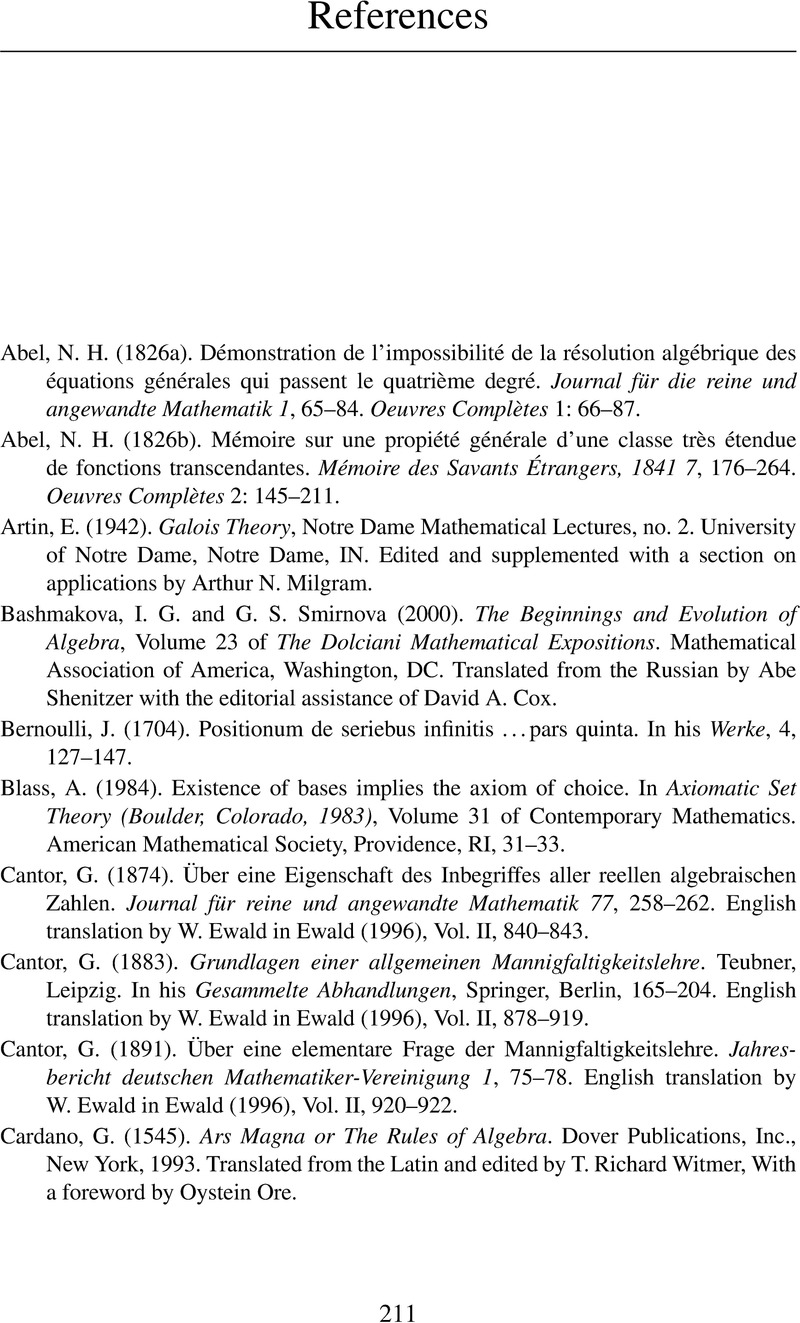References
Published online by Cambridge University Press: 28 July 2022
Summary

Information
- Type
- Chapter
- Information
- Algebraic Number Theory for BeginnersFollowing a Path From Euclid to Noether, pp. 211 - 216Publisher: Cambridge University PressPrint publication year: 2022
